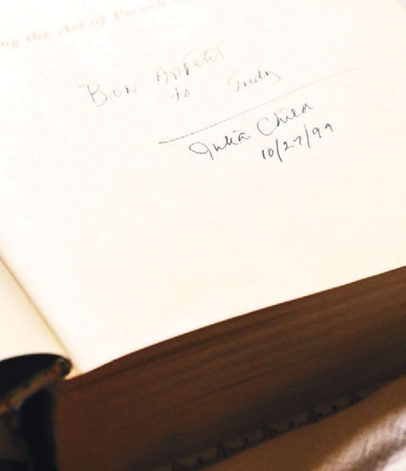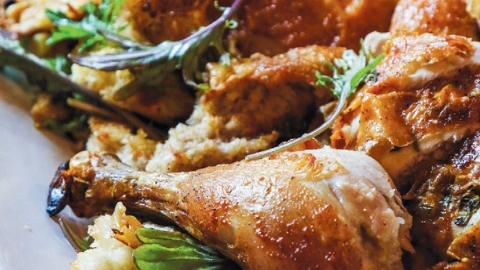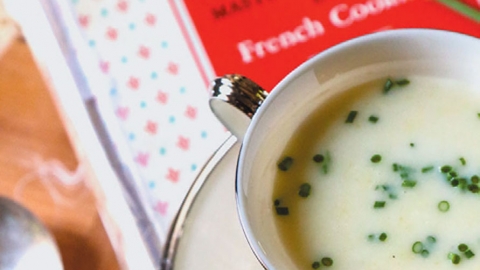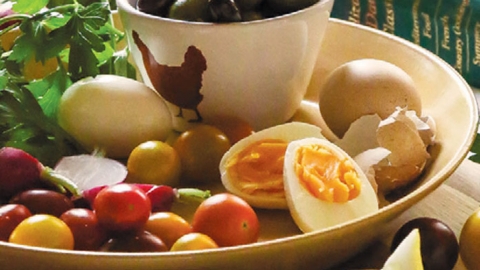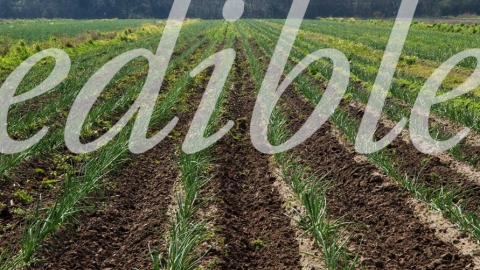Domestic Goddesses
“I never intended to be a food writer. But perhaps the truth is that everything in life that matters—in the professional arena as with affairs of the heart—cannot be planned.” —Nigella Lawson
I didn’t always want to be a food writer. First, I wanted to be a veterinarian, then a fashion designer, architect, marine biologist. I’m sure there were more, but I finally settled on interior design as a career path in college. I lasted on that path for many years after college, but eventually decided that I would rather be cooking in kitchens than designing them.
After culinary school, food media became my calling and I got my first experience in publishing and writing for a national publication at Martha Stewart Living. My dream job. While it might seem that I just landed in this position, I had actually been inspired for many years by those who came before me. All accomplished cooks, all esteemed writers, all women. There are not enough pages in this magazine for me to explain how important these ladies are and have been to me as well as to the entire food industry. Some are known to most of us on a firstname basis, like Oprah or Beyoncé, but all of them—Julia, Marcella, Alice, Martha, Nigella, Elizabeth and Judy—have been instrumental in the path of my career.
Julia
I met Julia Child in 1999 at a book signing in New York City—she was well into her 80s but was still the towering personality we all had come to love through her cookbooks and TV shows. When I was young I watched “The French Chef” with my dad, James, who has always been interested in food and cooking. We laughed when she dropped the chicken on the floor and kept going and we made casual fun of her way of speaking. But the reward for paying attention to Julia, for me at least, were the meals my dad made that were inspired by her—coulibiac of salmon, chicken bouillabaisse and French bread. You could say she was the pioneer of food TV, and I ate it up.
I didn’t cook my way through Mastering the Art of French Cooking, Volumes I and II, but I have made many of Julia, Simone and Louisette’s recipes through the years. One of my favorites, and reportedly one of Julia’s favorites as well, is this cold potato soup with leeks. “Vichyssoise” sounds as French as it gets, but the origins of the dish are a subject of debate among culinary historians—in her book Julia calls it an American invention, while other French chefs have been credited with its creation.
Marcella
It was in culinary school in New York City in 1997 that I first got a grasp of real cooking techniques and how they relate to every style of food. Italian cuisine has long been one of my favorites, so I soaked in Marcella Hazan’s books, since she is considered to be the author who changed the way Americans cook Italian food. Marcella passed away in 2013 but her legacy carries on—her cookbooks are still bestsellers every year, and one of the first recipes I tried from Marcella’s classic tome Essentials of Classic Italian Cooking is now one of the most popular recipes on the internet.
Martha
It was clear before I set foot in culinary school that the restaurant path was not for me. Instead, my goal was to land a job in the test kitchen of one of the long-standing food magazines. The day after graduation I started an internship at Martha Stewart Living magazine, and the course of my career changed for good. I chose to include one of my original recipes in this piece for several reasons. Firstly, while most people associate Martha Stewart recipes with Martha herself, an amazing assortment of employees create content for all of her brands—I was lucky to be one of them and work alongside many talented people from the worlds of design, food, gardening, crafts and home décor. Second, because this recipe encapsulates everything I learned from Martha and those I worked with by using the best ingredients, in season, to create something delicious as well as beautiful. I remember shooting this outdoors on location: I loved how the sunlight shone through the trees, giving the salad a dappled look. It was always about the photography at Living magazine, and food was always the star.
Elizabeth
Matt Sartwell of the cookbook store Kitchen Arts & Letters in New York City once said, “I’m convinced that the very best cookbooks are those that turn a cook loose in the kitchen. They free you to improvise, to respond to the fact that the basil is a little bland or there isn’t quite enough fish to feed four people. They teach you to think on your feet at the same time they take you someplace you have not been before.” He was referencing a list of the most useful and beloved cookbooks, written at a time when photography wasn’t the key ingredient. Elizabeth David is on his list of authors that fall into this realm. When I first started in publishing I felt that my editorial voice wasn’t enough, so I devoured cookbooks, news columns and especially food memoirs. An Omelet and a Glass of Wine by Elizabeth David showed me how words could transport you to another time and place and evoke a feeling or a taste without any pictures. Elizabeth wrote eight books in her lifetime, mostly about French, Italian and Mediterranean food and cooking. She assumes you know the basics; her recipes are timeless and all her books are wonderful works of reference as well as beautiful reads.
Nigella
If Elizabeth David was the epitome of beautiful food literature for her time, Nigella is the new reign. She uses her hands when cooking, eats seductively for the TV screen and uses words like posh, squidgy, pottering and fiddly when cooking. We love her because she could be one of us—except for the fact that, as I read in GQ, “She could make a grown man shudder simply by whisking an egg.” Regardless, she makes you want to eat, and doesn’t make a fuss about it. She’s known as a domestic goddess but she knows her way around a kitchen as well as the publishing world—I have a dozen of her best-selling cookbooks and watched every episode of her cooking show “Nigella Bites” when it aired. I once handed her a resume at a book signing in Kansas City, offering my food writing and recipe development services to her in London. She graciously turned me down via a handwritten note mailed from London soon after. She will always be my favorite, not for that but for her home cooking for real life.
Judy Rodgers
When I think of restaurant dishes that have made an impact on my life, the list is long, for I have spent a good majority of my time eating in restaurants across the country, and even other countries. I like to consider it “research and development.” The French Laundry in California’s Wine Country, Taillevant in Paris and Prune in New York City are favorites, but ultimately this humble chicken salad from Judy Rodgers of Zuni Café in San Francisco tops the list. If you were to type “Judy Rodgers chicken” into Google there would be over 2 million results. It’s that good. Judy opened Zuni Café in 1986 and ran it until she died of cancer in 2013. This roast chicken salad for two became a cult hit when it hit the menu in 1987 and has been duplicated, imitated and revised by thousands ever since. Chef Michelle Donaldson pulled off an incredible version when she was cooking at Smoke, and for that I wish she was still cooking in Tulsa.
Alice
Chez Panisse was the first restaurant I experienced where garden lettuces were not only acceptable as a menu item, but one of the defining dishes. Owner Alice Waters has a way of taking an ordinary ingredient and highlighting it to the fullest potential. On my most recent visit several years ago, dessert was a bowl of local mandarins and dates—the simplest dessert I have experienced in a restaurant of this notoriety, but game changing for me, and ultimately what led me to switch from covering the local dining scene to writing features on the amazing local purveyors in our area, a topic almost exclusively covered by this magazine alone. Waters has long been a champion of local sustainable agriculture—over 40 years of activism—and in 1995 founded the Edible Schoolyard Project, which advocates for a free school lunch for all children and a sustainable food curriculum in every public school. If I am able to make a fraction of a percent of a difference alongside what Alice has long advocated for I will consider my career a success.


